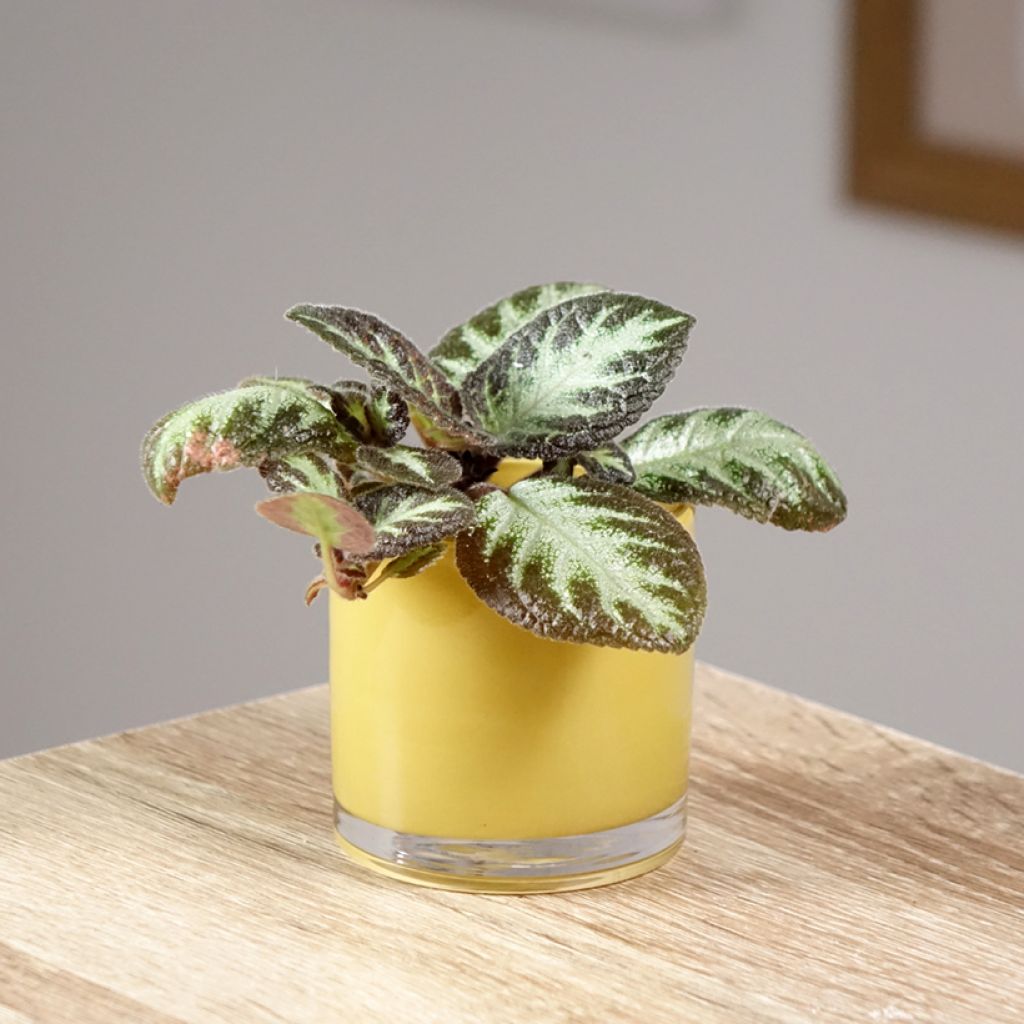

Episcia cupreata Silver Shield - Violette flamboyante, Épiscia
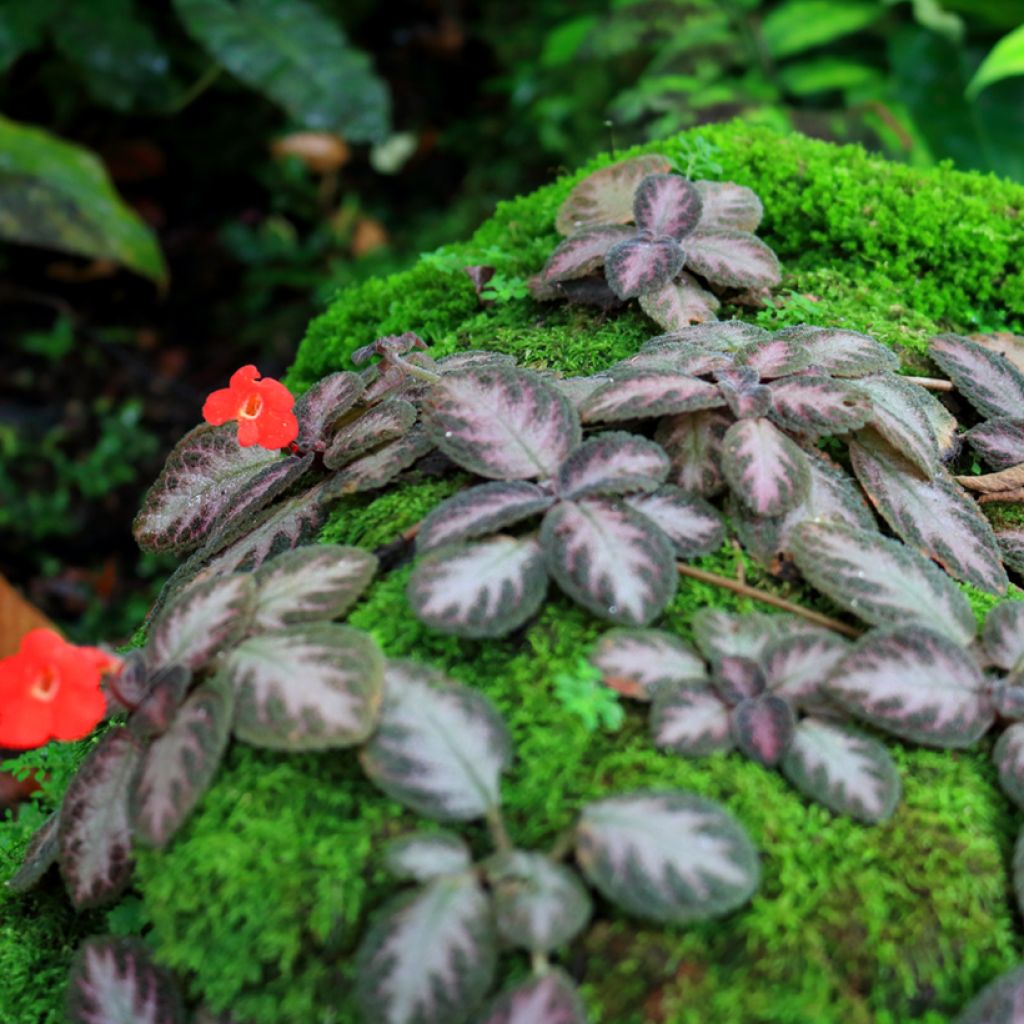

Episcia cupreata Silver Shield - Violette flamboyante, Épiscia
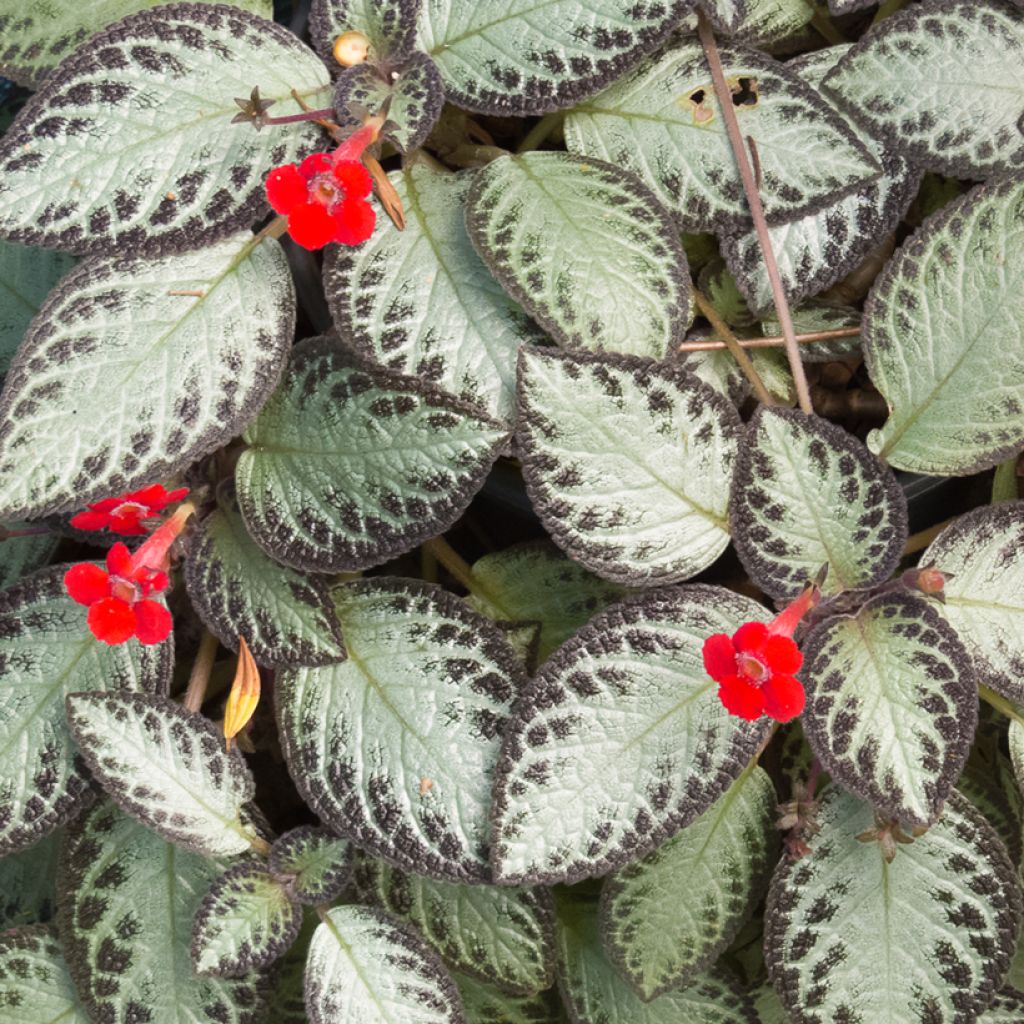

Episcia cupreata Silver Shield - Violette flamboyante, Épiscia
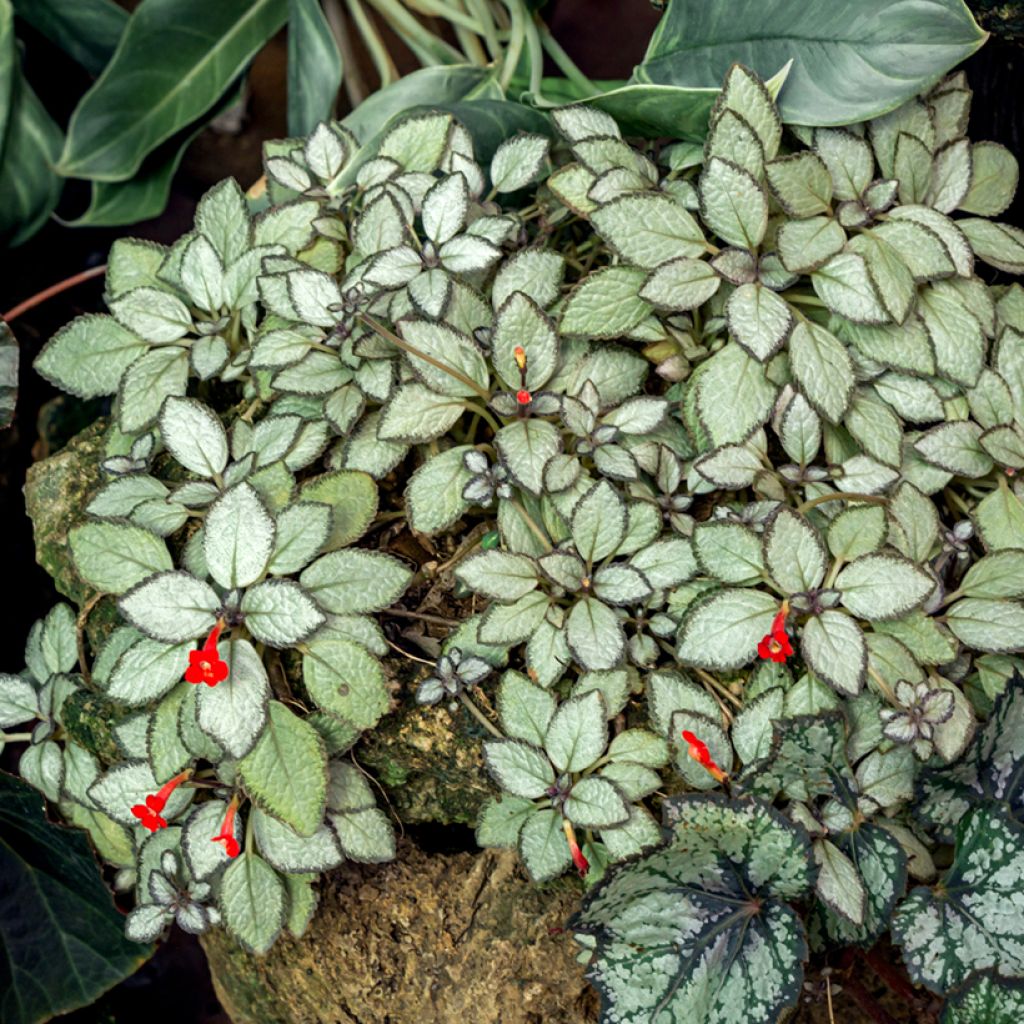

Episcia cupreata Silver Shield - Violette flamboyante, Épiscia
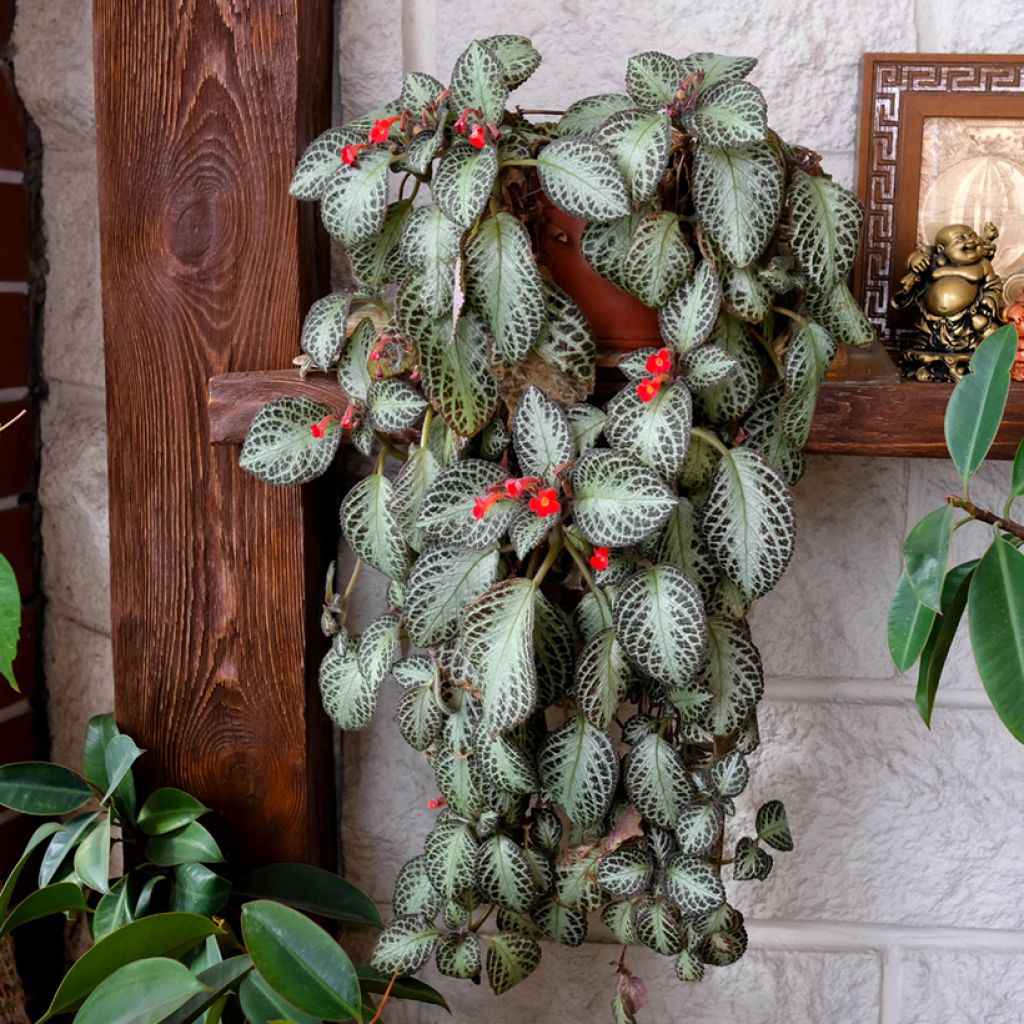

Episcia cupreata Silver Shield - Violette flamboyante, Épiscia
Episcia cupreata Silver Shield - Flame violet
Episcia cupreata Silver Shield
Flame violet
This item cannot be shipped to the selected country
Delivery charge from 6,90 €
More information
Shipping country:
-
-
-
-
-
-
-
-
-
-
-
-
-
-
-
-
-
-
-
-
-
-
-
-
-
-
-
-
-
-
-
-
Schedule delivery date,
and select date in basket
This plant carries a 30 days recovery warranty
More information
We guarantee the quality of our plants for a full growing cycle, and will replace at our expense any plant that fails to recover under normal climatic and planting conditions.
From 7,90 € for pickup delivery and 6,90 € for home delivery
Express home delivery from 8,90 €.
Description
The Episcia 'Silver Shield', or Flame Violet, is a houseplant with delightful silver foliage. Its ovate leaves are delicately quilted and edged with chocolate tones. This variety thrives particularly well in bright rooms such as a living room or conservatory where it can enjoy abundant light without direct sun. In a hanging basket, its trailing habit works wonders, while in a terrarium, it will form an elegant ground cover.
The Episcia 'Silver Shield' is a stoloniferous perennial plant belonging to the Gesneriaceae family. This cultivar derived from the species Episcia cupreata is prized for its ornamental foliage and vibrant flowering. Its velvety leaves feature a quilted texture and a chocolate-brown hue accentuated by silver veins; they measure between 4 and 10 cm in length. The plant reaches a height of 15 to 20 cm and a spread of around 30 cm. Its growth is rapid, encouraged by the production of stolons that develop new shoots, much like strawberries. The flowering, which extends from spring to autumn, produces small tubular orange-red flowers that stand out beautifully against the foliage. The Episcia genus includes around ten species of perennial plants native to the tropical forests of Central and South America, particularly Colombia, Brazil, and Venezuela. These herbaceous plants closely related to African violets thrive in humid undergrowth, forming vegetative carpets thanks to their creeping stolons. The genus name Episcia derives from the Greek 'episkios', meaning 'shaded', referring to the natural habitat of these plants in the undergrowth of tropical forests.
When grown indoors, the Episcia 'Silver Shield' requires bright light without direct sun exposure, high ambient humidity, and temperatures between 18 and 24°C. A rich, light, and well-draining substrate is recommended, with regular watering to keep the soil slightly moist while avoiding excess water.
The irresistibly chic Episcia 'Silver Shield' is a decorative asset for enhancing a bright living room, bedroom, or even a sheltered conservatory. With its trailing habit and silver leaves, it is suited to hanging baskets, wall-mounted troughs, or a high shelf from where its stolons can spread freely. This refined-looking plant fits perfectly into bohemian or contemporary interiors. It can also be used to green up a terrarium or decorate a bright bathroom. To create a harmonious display on a shelf, pair it with an African violet (Saintpaulia 'Optimara MyJoy') and a Peperomia argyreia, for example.
Report an error about the product description
Episcia cupreata Silver Shield - Flame violet in pictures


Foliage
Plant habit
Flowering
Botanical data
Episcia
cupreata
Silver Shield
Gesneriaceae
Flame violet
Cultivar or hybrid
Location
Location
Maintenance and care
Potting advice, substrates and fertilisers
Houseplant care
Disease and pest advice
Maintenance and care
This item has not been reviewed yet - be the first to leave a review about it.
Haven't found what you were looking for?
Hardiness is the lowest winter temperature a plant can endure without suffering serious damage or even dying. However, hardiness is affected by location (a sheltered area, such as a patio), protection (winter cover) and soil type (hardiness is improved by well-drained soil).

Photo Sharing Terms & Conditions
In order to encourage gardeners to interact and share their experiences, Promesse de fleurs offers various media enabling content to be uploaded onto its Site - in particular via the ‘Photo sharing’ module.
The User agrees to refrain from:
- Posting any content that is illegal, prejudicial, insulting, racist, inciteful to hatred, revisionist, contrary to public decency, that infringes on privacy or on the privacy rights of third parties, in particular the publicity rights of persons and goods, intellectual property rights, or the right to privacy.
- Submitting content on behalf of a third party;
- Impersonate the identity of a third party and/or publish any personal information about a third party;
In general, the User undertakes to refrain from any unethical behaviour.
All Content (in particular text, comments, files, images, photos, videos, creative works, etc.), which may be subject to property or intellectual property rights, image or other private rights, shall remain the property of the User, subject to the limited rights granted by the terms of the licence granted by Promesse de fleurs as stated below. Users are at liberty to publish or not to publish such Content on the Site, notably via the ‘Photo Sharing’ facility, and accept that this Content shall be made public and freely accessible, notably on the Internet.
Users further acknowledge, undertake to have ,and guarantee that they hold all necessary rights and permissions to publish such material on the Site, in particular with regard to the legislation in force pertaining to any privacy, property, intellectual property, image, or contractual rights, or rights of any other nature. By publishing such Content on the Site, Users acknowledge accepting full liability as publishers of the Content within the meaning of the law, and grant Promesse de fleurs, free of charge, an inclusive, worldwide licence for the said Content for the entire duration of its publication, including all reproduction, representation, up/downloading, displaying, performing, transmission, and storage rights.
Users also grant permission for their name to be linked to the Content and accept that this link may not always be made available.
By engaging in posting material, Users consent to their Content becoming automatically accessible on the Internet, in particular on other sites and/or blogs and/or web pages of the Promesse de fleurs site, including in particular social pages and the Promesse de fleurs catalogue.
Users may secure the removal of entrusted content free of charge by issuing a simple request via our contact form.
The flowering period indicated on our website applies to countries and regions located in USDA zone 8 (France, the United Kingdom, Ireland, the Netherlands, etc.)
It will vary according to where you live:
- In zones 9 to 10 (Italy, Spain, Greece, etc.), flowering will occur about 2 to 4 weeks earlier.
- In zones 6 to 7 (Germany, Poland, Slovenia, and lower mountainous regions), flowering will be delayed by 2 to 3 weeks.
- In zone 5 (Central Europe, Scandinavia), blooming will be delayed by 3 to 5 weeks.
In temperate climates, pruning of spring-flowering shrubs (forsythia, spireas, etc.) should be done just after flowering.
Pruning of summer-flowering shrubs (Indian Lilac, Perovskia, etc.) can be done in winter or spring.
In cold regions as well as with frost-sensitive plants, avoid pruning too early when severe frosts may still occur.
The planting period indicated on our website applies to countries and regions located in USDA zone 8 (France, United Kingdom, Ireland, Netherlands).
It will vary according to where you live:
- In Mediterranean zones (Marseille, Madrid, Milan, etc.), autumn and winter are the best planting periods.
- In continental zones (Strasbourg, Munich, Vienna, etc.), delay planting by 2 to 3 weeks in spring and bring it forward by 2 to 4 weeks in autumn.
- In mountainous regions (the Alps, Pyrenees, Carpathians, etc.), it is best to plant in late spring (May-June) or late summer (August-September).
The harvesting period indicated on our website applies to countries and regions in USDA zone 8 (France, England, Ireland, the Netherlands).
In colder areas (Scandinavia, Poland, Austria...) fruit and vegetable harvests are likely to be delayed by 3-4 weeks.
In warmer areas (Italy, Spain, Greece, etc.), harvesting will probably take place earlier, depending on weather conditions.
The sowing periods indicated on our website apply to countries and regions within USDA Zone 8 (France, UK, Ireland, Netherlands).
In colder areas (Scandinavia, Poland, Austria...), delay any outdoor sowing by 3-4 weeks, or sow under glass.
In warmer climes (Italy, Spain, Greece, etc.), bring outdoor sowing forward by a few weeks.
































